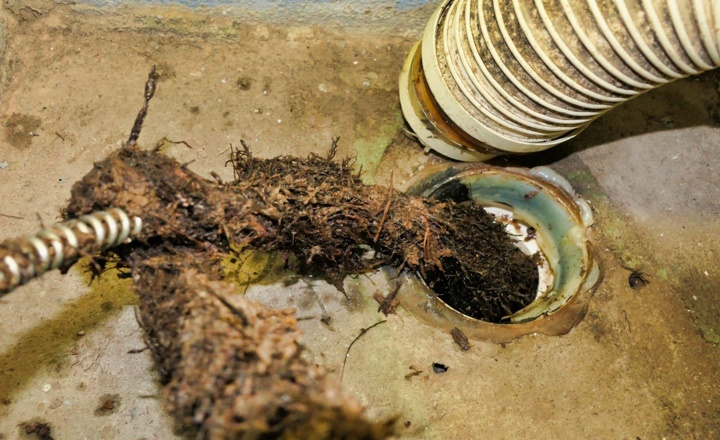
Blocked drains are a common issue encountered in households, often resulting from accumulated food particles, hair, soap scum, and grease. These blockages can disrupt the smooth functioning of home plumbing systems, posing a threat to hygiene and comfort. Maintaining clear drains isn't just about convenience—it's crucial for household efficiency and health. Ignoring blocked drains can lead to more severe problems, such as water damage, foul odours, or even structural damage. This article aims to share practical and effective solutions for tackling and preventing blocked drains.
Identifying the Signs of a Blocked Drain
Early identification of a blocked drain can prevent more significant issues later. Common symptoms include slow-draining water, unpleasant odours emanating from the drain, gurgling sounds in the pipes, and, at times, water backup. Recognising whether the blockage is minor or major can save time and cost. Slight blockages might only cause water to drain slowly, while major ones might lead to complete drain obstruction or sewage backup. Early detection and intervention are vital as they can prevent potential damage and costly repairs.
Distinguishing between minor and major blockages is essential. Minor blockages typically occur close to the drain opening and are relatively easy to handle. However, when water backs up in multiple fixtures simultaneously, this usually indicates a more severe blockage deeper within the plumbing system, often requiring professional help.
Preventative Measures to Avoid Blockages
Prevention is indeed better than a cure, and adopting certain habits can help maintain clear drains. Simple practices, such as using drain guards to catch hair and food particles, can significantly reduce the likelihood of blockages. Establishing a regular drain cleaning schedule, perhaps monthly, with hot water, baking soda, and vinegar, can help keep potential blockages at bay.
Regular maintenance plays a pivotal role in preventing build-ups. Ensuring that only drain-friendly products are flushed down the pipes can prevent clogging. Avoid disposing of cooking grease down the drain; instead, let it cool and dispose of it in the bin. Taking these preventive measures helps maintain drain health, ultimately saving time and resources.
DIY Techniques for Clearing Minor Blockages
When faced with minor blockages, a few DIY techniques can prove effective. Using a plunger is often the first line of defence. For an effective plunge, fill the sink or tub with enough water to cover the plunger cup, then place the plunger over the drain and pump vigorously until the blockage clears.
Another popular method involves baking soda and vinegar. Pour half a cup of baking soda down the drain, followed by half a cup of vinegar. Allow the mixture to foam for about 15 minutes, then flush with hot water. This method can effectively break down minor blockages without causing damage to the pipes.
For grease build-up, pouring boiling water down the drain can dissolve and flush away the grease. This technique works best when done regularly to prevent grease accumulation. However, it's important to exercise caution as boiling water can damage certain types of pipes, such as PVC. Always follow safety guidelines to avoid injury during DIY repairs.
Advanced Methods for Stubborn Blockages
Sometimes, advanced methods are necessary for more stubborn blockages. Plumbing snakes, for instance, are tools that can reach deeper into the plumbing system and break up blockages. Available as manual or motorised devices, these tools are handy for blockages beyond the reach of a plunger.
Chemical drain cleaners are another option. While effective, they come with risks, including potential damage to pipes and their environmental impact. If opting for this method, follow the manufacturer’s instructions carefully.
For blockages located in the P-trap, dismantling and cleaning it can provide direct access to the blockage. Often, it’s where hair and soap scum accumulate. Remember to place a bucket underneath before removing it to catch any water or debris.
High-pressure water jetting is a professional-grade method. It uses high-pressure streams of water to clear stubborn blockages from pipes. This technique is typically recommended when all other methods have failed.
When to Call a Professional Plumber
Knowing when to seek professional help is crucial. Persistent drain issues, recurrent blockages, or multiple slow drains throughout the home might indicate a severe underlying problem. Professional plumbers use advanced techniques, such as video inspections, to identify and resolve complex blockages.
While hiring a plumber may seem costly compared to DIY approaches, consider the potential savings from preventing extensive damage or recurring issues. Professional services provide the expertise and tools necessary for comprehensive blockage removal.
Selecting the right plumbing service is important. Look for licensed professionals with good reviews and fair pricing. A service that offers a warranty on work done provides added peace of mind.
Your Action Plan: Keeping Drains Clear for Good
In summary, maintaining clear drains requires a mixture of regular maintenance and timely intervention. Starting from simple preventative measures to advanced methods and knowing when to seek professional help, all these steps contribute to efficient household plumbing. Regular maintenance and early detection play critical roles in ensuring smooth drainage systems.
Balancing DIY efforts with professional services when needed ensures long-term solutions to drain blockages. Regular inspections and cleaning schedules keep drains functioning optimally. Being proactive in drain management not only enhances household efficiency but also prolongs the life of your plumbing system.
On an end note, whether it’s a routine check or you need to clean a blocked outdoor drain, taking timely and appropriate steps makes all the difference. So, keeping these strategies in mind and being vigilant can help maintain a healthy and smooth-running home.
| < Prev | Next > |
|---|




